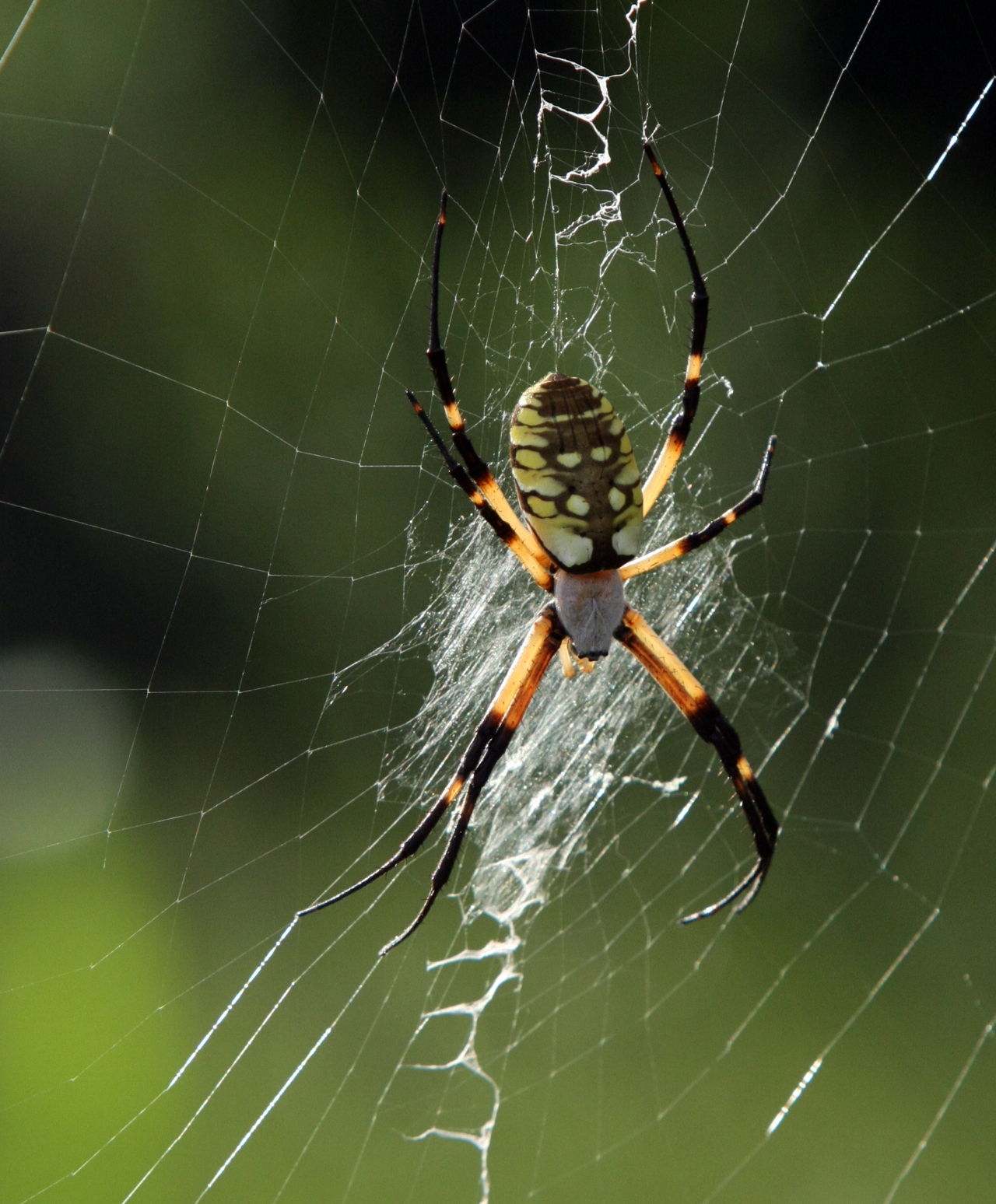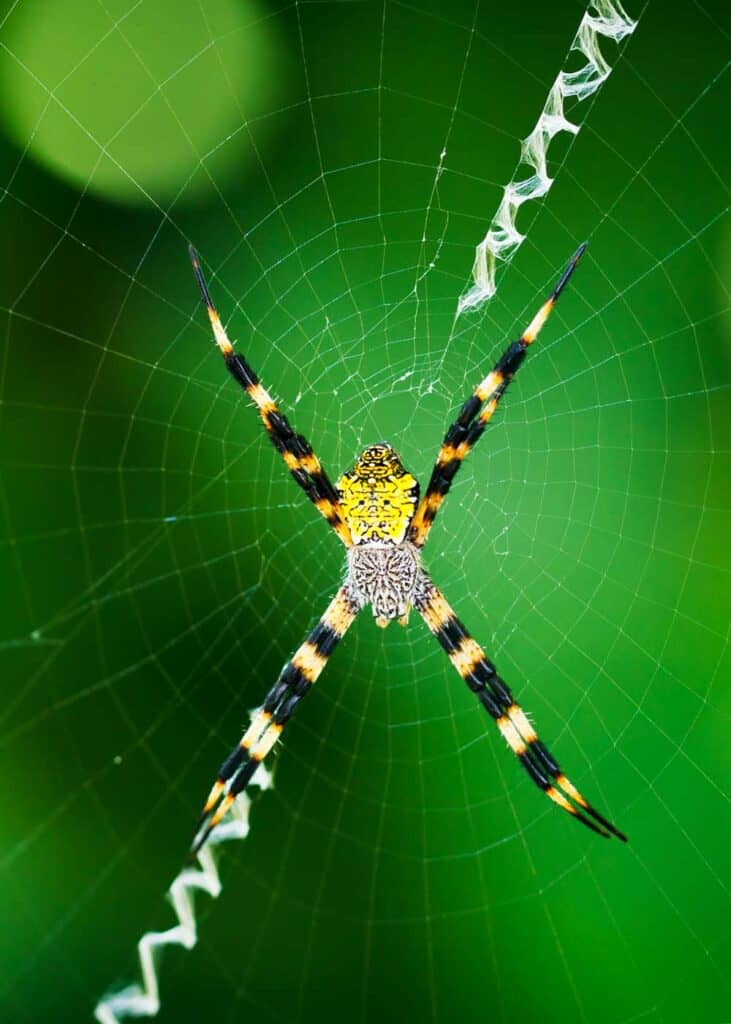

Asian fishermen have been known to apply the tough strands to bamboo frames or ball it up and toss it in the water to net small bait fish. Humans have actually collected these webs and wove them into handsome, gold-colored silk garments. It is thought this yellowish cast might help draw in insects that are automatically attracted to yellow flowers or may help camouflage the web in the woods. The web’s threads have a golden hue, thus the name Golden Orb Spider. It is this love of spinning durable webs with filaments much stronger than steel that gives this arachnid the family name Nephila, which is ancient Greek for the “love of spinning.” This they do in a spiral fashion with alternating sticky and non-sticky strands that give the web a patchwork appearance when viewed an angle. The wise Banana Spider would best build its next web a little higher off the ground.


If it manages to survive an unfortunate encounter with an unsuspecting human, it will no doubt carry fond memories for the rest of its year-long lifespan of the human flailing his or her arms around, cursing and doing a spastic, little impromptu dance in the woods. But some, such as the desertas wolf spider of Portugal and the Kaua’i cave spider of Hawaii, are endangered.Besides having a weird, long speckled body and eight vile-looking pointed legs that span four inches, the most noteworthy trait of Camp Salmen’s Banana Spider ( Nephila clavipes), also know as the Golden Orb Spider, is its ability to put its web at face level in the woods, especially on trails. Many species are considered to have stable populations. The young hatch inside, then emerge and climb on mom’s back until they’re old enough to live on their own. Once mated, the female spins a round egg sac, attaches it to her abdomen and it carries around with her. When it’s time to mate, male wolf spiders attract females by rhythmically waving their long mouthparts (palps) or drumming them on leaves. One species has even been found living in wheat crops, feeding on pests such as aphids. From deserts to rainforests, grasslands to suburban lawns, wolf spider thrive there’s likely one nearby. While some species are found on cold, rocky mountaintops, others live in volcanic lava tubes.
#BANANA SPIDER HOW TO#
Wolf spiders have figured out how to live just about anywhere. Sometimes they dig burrows or make holes under rocks or logs to live in. The dark, mottled colors on their bodies help them blend in with decaying plant matter while hunting or avoiding predators. Most wolf spiders spend their time on the ground. Two large eyes gleam from the top of the head two more large eyes peer out the front and four smaller eyes form a row just above the spider’s mouth. Once wolf spiders catch their prey, they either mash it up into a ball or inject venom into it, liquefying the internal organs into a wolf-spider smoothie.Īll wolf spiders have eight dark eyes arranged around their heads, or cephalothorax. Most of the thousands of species in this family don’t spin webs instead, they chase and pounce on their insect prey like the wolves that inspire their name. Wolf spiders are the sprinters of the spider world.


 0 kommentar(er)
0 kommentar(er)
